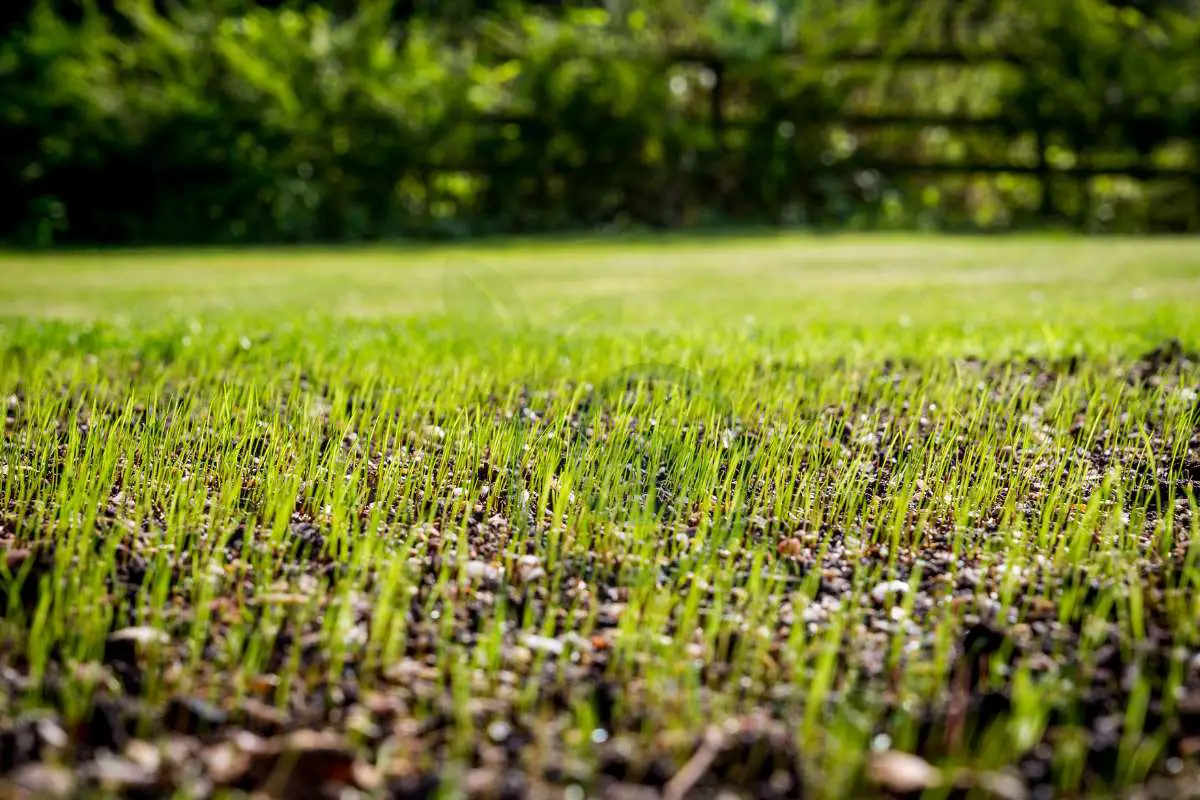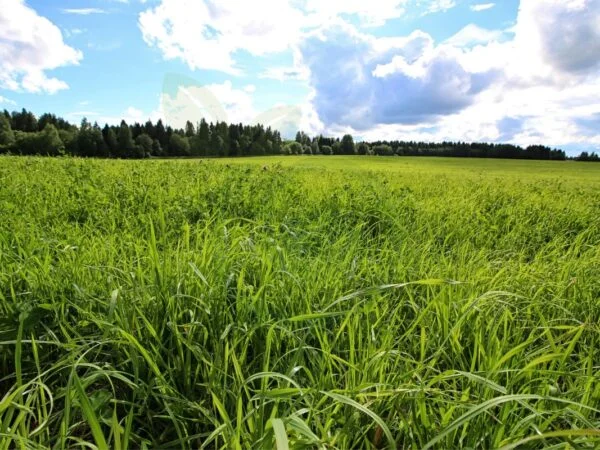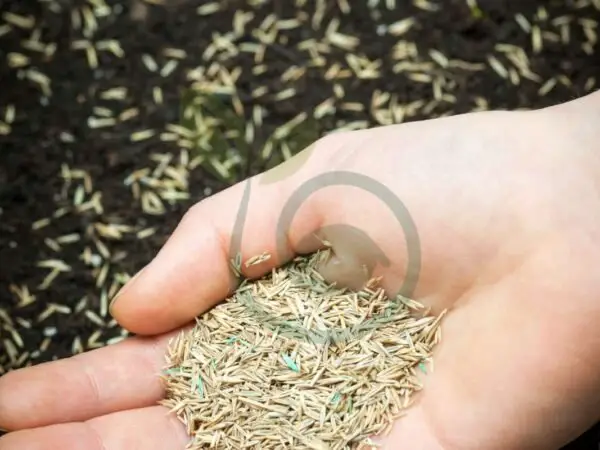Did you know that choosing the right time to seed your grass can make all the difference in Michigan's unpredictable climate? Timing is crucial. In Michigan, the best time to seed grass is during the early fall months, between late August and mid-September. This period allows the seeds to establish before winter sets in, giving them a head start for robust growth come spring. By seeding at this optimal time, you can maximize your lawn's potential and minimize issues like weed competition and heat stress.
Key Takeaways
- Timing is Key: The best time to seed grass in Michigan is during the late summer to early fall when the soil is warm, and there is more consistent moisture.
- Soil Preparation Matters: Before seeding, ensure your soil is properly prepared by removing debris, testing pH levels, and adding necessary amendments for optimal grass growth.
- Choose Wisely: Select turfgrass species that are well-suited to Michigan's climate and your lawn's specific conditions, mulch, and proper irrigation to promote healthy growth and resilience in your yard.
- Enhance Soil Quality: Implement soil improvement techniques such as aeration, topdressing, and fertilization to create a favorable environment for new grass seed to thrive.
- Follow a Methodical Seeding Process: Properly sow the grass seed, ensuring even coverage, gentle watering, and protection from birds or other disturbances to maximize germination success.
- Post-Seeding Care is Crucial: Maintain consistent watering, avoid heavy foot traffic, and monitor for signs of pests or diseases to nurture the newly seeded lawn to maturity.
Understanding Michigan's Climate
Seasonal Variations
Michigan experiences distinct seasonal variations, including spring, summer, fall, and winter. Each season plays a crucial role in determining the success of grass seeding. Spring brings warmer temperatures and increased sunlight, ideal for seed germination. Summer offers optimal conditions for grass growth with longer daylight hours. Fall provides cooler temperatures, reducing heat stress on newly seeded lawns. Winter brings cold weather, which may affect the establishment of grass seeds.
Understanding these seasonal changes is vital as they directly impact the ideal time for seeding grass in Michigan. For instance, spring and fall are generally recommended for seeding due to moderate temperatures and increased moisture levels. However, summer can be challenging due to high temperatures that may hinder germination.
The importance of comprehending Michigan's seasonal variations lies in ensuring successful lawn establishment. By timing the seeding process correctly based on each season's characteristics, homeowners can maximize their chances of achieving a lush and healthy lawn.
Temperature Impact
Temperature plays a critical role in influencing grass seed germination and growth in Michigan. The optimal temperature range for seeding grass typically falls between 60°F to 75°F. These temperatures promote faster germination and root development, leading to healthier turf.

The correlation between temperature and successful lawn development is significant. Cooler temperatures slow down seed germination, while excessively high temperatures can cause heat stress on young seedlings. By choosing the right time to seed based on temperature conditions, homeowners can enhance the overall outcome of their lawn establishment efforts.
Considering temperature variations throughout different seasons is essential when planning to seed grass in Michigan. Monitoring local weather forecasts can help determine the most suitable time to begin the seeding process for optimal results.
Precipitation Patterns
Precipitation plays a crucial role in supporting grass seed establishment by providing essential moisture for germination and growth. Adequate watering is essential during the initial stages after seeding to ensure proper root development.
Analyzing precipitation patterns helps homeowners understand watering needs for newly seeded lawns accurately. Excessive rainfall may lead to waterlogging issues, while prolonged dry spells could result in poor germination rates.
It is vital to consider precipitation levels when planning to seed grass in Michigan as it directly impacts the success of lawn establishment efforts.
Optimal Seeding Time
Spring Seeding
Seeding grass in spring in Michigan offers several benefits. Firstly, the soil temperature is ideal for seed germination, promoting quick and robust growth. Secondly, spring seeding allows the grass to establish before the hot summer months, providing a strong foundation. Lastly, spring seeding helps to fill in bare patches left by winter damage.
To prepare for spring seeding, it's crucial to clear the area of debris and weeds to give the new grass seedlings space to grow. Additionally, aerating the soil can improve water and nutrient absorption for healthier grass development. When executing spring seeding, ensure to water frequently but lightly to keep the soil consistently moist without causing pooling or runoff.
Spring seeding is a suitable option for achieving a lush lawn in Michigan because it capitalizes on the region's moderate temperatures during this time of year. The combination of increased sunlight hours and regular rainfall creates optimal conditions for new grass growth, resulting in a vibrant and healthy lawn throughout the summer.
Fall Seeding
Fall is recommended as an optimal time for seeding grass in Michigan due to several reasons. Firstly, the cooler temperatures promote better seed germination rates, allowing roots to establish deeply before winter dormancy sets in. Fall provides a perfect balance of warmth from summer lingering while cooler nights prevent heat stress on young seedlings.
Choosing fall for seeding grass over other seasons comes with advantages such as reduced competition from weeds that are less active during this time. Moreover, fall's milder weather reduces water evaporation rates compared to hot summers, ensuring that newly seeded areas receive adequate moisture critical for successful establishment.
For successful fall seeding in Michigan, it is essential to start early enough before frost sets in while still benefiting from warm soil temperatures conducive to germination. Adequate watering post-seeding coupled with proper fertilization can help boost root development before winter arrives, setting up your lawn for lush growth come springtime.
Preparing Your Soil
Soil Testing
Soil testing is crucial before seeding grass in Michigan. It helps determine the nutrient levels and pH balance of the ground. Conducting soil tests accurately involves collecting samples from various areas of your lawn.
To enhance soil health for optimal grass growth, consider adding compost or organic matter to enrich the soil. Maintaining proper soil conditions ensures that grass seeds have a healthy environment to thrive in. Healthy soil contributes to robust root development and overall plant vitality.
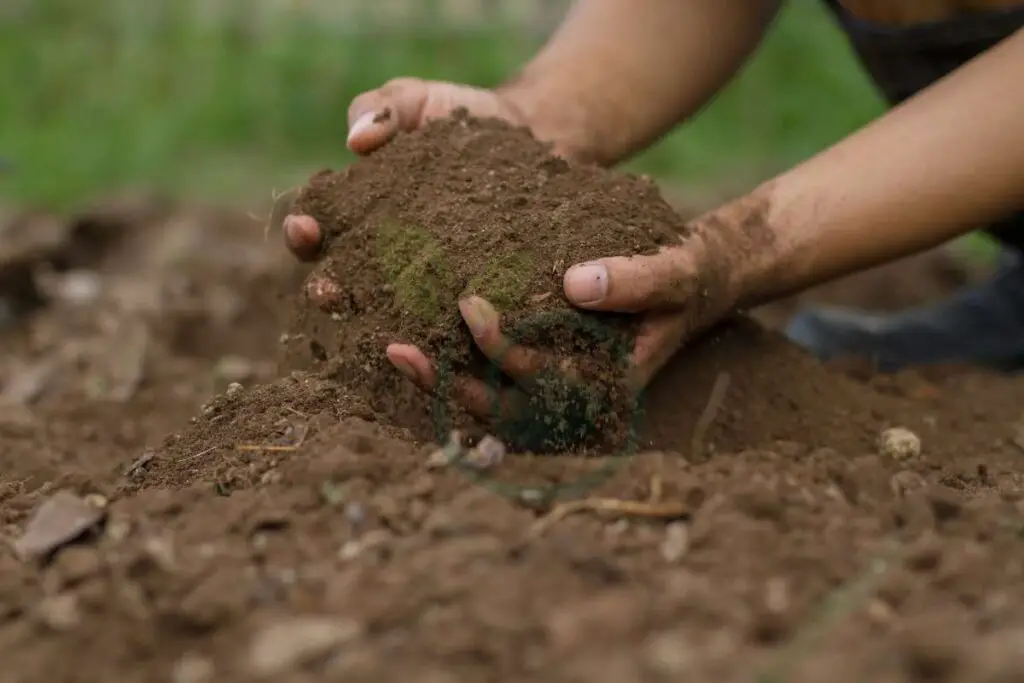
Enhancing Soil Health
Improving soil health is key to successful grass growth. Use organic products like compost or manure to provide essential nutrients for your lawn. These products help maintain a balanced ecosystem underground, fostering healthy microbial activity and nutrient availability.
Soil aeration plays a vital role in promoting healthy turf growth by allowing air, water, and nutrients to penetrate deep into the ground. Methods such as core aerating or spike aerating can effectively improve soil compaction issues and encourage strong root development. Proper soil aeration leads to lush green lawns with enhanced resilience against stressors like drought or foot traffic.
Selecting Grass Seed
Cool-Season Varieties
Cool-season grass varieties like Kentucky bluegrass and tall fescue thrive in Michigan's climate due to their adaptability to cold temperatures. These grasses are ideal for the state's long, chilly winters.
When choosing between different cool-season grass types, consider factors such as disease resistance, traffic tolerance, and maintenance requirements. For instance, Kentucky bluegrass offers a lush appearance but needs more maintenance compared to tall fescue.
To select the right cool-season variety for your lawn, assess your specific needs. If you prioritize a dense, fine-textured lawn that can withstand heavy foot traffic, Kentucky bluegrass might be the best choice. On the other hand, if you seek a low-maintenance option with good drought tolerance, tall fescue could be more suitable.
Shade Tolerance
Choosing shade-tolerant grass species is crucial in Michigan where trees and buildings often cast shadows on lawns. Opt for varieties like fine fescues and creeping red fescue known for their ability to thrive in shady conditions.
Factors influencing grass tolerance to shade include the amount of sunlight received daily and soil moisture levels. Fine fescues excel in moderate shade but require well-drained soil, while creeping red fescue tolerates heavier shade and adapts well to various soil types.
For optimal results with shade-tolerant grass varieties, ensure proper lawn care practices such as regular watering, adequate fertilization tailored to shaded areas, and periodic dethatching to maintain healthy growth even in reduced sunlight.
Drought Resistance
In Michigan's unpredictable climate patterns, investing in drought-resistant grass varieties like turf-type tall fescue becomes essential for maintaining green lawns during dry spells. These varieties have deep root systems that help them access water stored deeper in the soil.
Characteristics that contribute to a grass type's drought resistance include its ability to conserve moisture through reduced leaf surface area and efficient water usage during hot weather conditions. Turf-type tall fescue stands out for its superior drought tolerance compared to other turfgrass species commonly grown in Michigan.
Improve your lawn's resilience against drought by implementing proper care practices such as adjusting irrigation schedules based on weather patterns, mowing at higher heights to promote deeper root growth, and overseeding with drought-resistant species when necessary.
Soil Improvement Techniques

Organic Matter
Organic matter plays a crucial role in supporting soil health and promoting robust grass growth. It enhances soil structure, retains moisture, and provides essential nutrients for plant development. Sources of organic matter such as compost, manure, and peat moss are beneficial for lawns in Michigan due to their ability to enrich the soil with vital nutrients.
Incorporating organic matter into the soil is key to achieving optimal results when seeding grass in Michigan. By mixing compost or well-rotted manure into the top few inches of soil, you can improve its texture and fertility. This process not only boosts nutrient levels but also enhances water retention capabilities, creating an ideal environment for grass seed germination.
pH Balancing
Balancing soil pH is critical for the successful establishment of a healthy lawn. Properly balanced pH levels ensure that grass plants can effectively absorb essential nutrients from the soil, leading to vigorous growth and vibrant greenery. Testing the soil's pH level using a simple kit allows you to determine whether adjustments are necessary for optimal grass seed germination.
Adjusting soil pH levels can be done by incorporating lime to raise pH or sulfur to lower it based on test results. Maintaining a slightly acidic pH between 6.0 and 7.0 is ideal for most types of grasses commonly grown in Michigan. Balanced pH levels contribute significantly to overall lawn health by enabling efficient nutrient uptake, resulting in lush, thriving grass cover.
Seeding Process
Seed Spreading
Achieving a lush lawn starts with evenly spreading grass seeds. Begin by dividing the seed into two equal portions for better coverage. Gently walk back and forth across the lawn to ensure uniform distribution.
Common mistakes in seed spreading include overcrowding certain areas, leading to uneven growth patterns. To avoid this, focus on maintaining a consistent pace while walking and make sure to overlap each pass slightly.
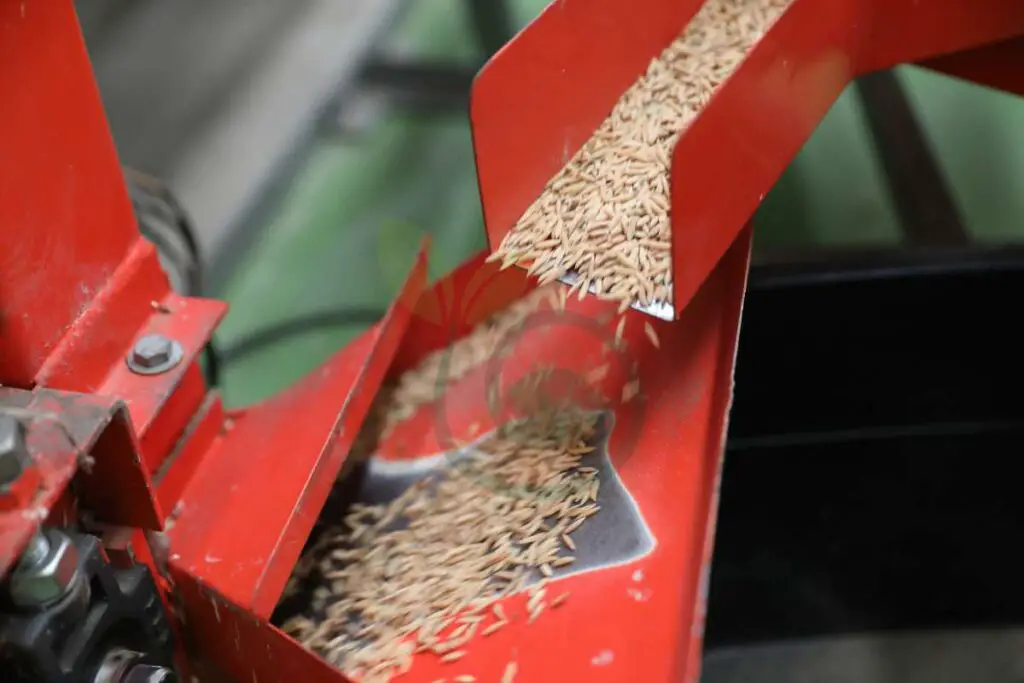
For uniform seed distribution, consider using a seed spreader for larger areas or sow seeds by hand for smaller patches. This helps prevent clumping and ensures that every section receives an adequate amount of seeds.
Watering Techniques
Effective watering post-seeding is crucial for successful germination. Water lightly immediately after planting to keep the soil moist but not waterlogged. Gradually increase watering frequency as the grass begins to sprout.
During different growth stages, adjust your watering schedule accordingly. In the initial weeks post-planting, aim for frequent but light watering sessions to support germination. As the grass matures, transition to deeper but less frequent watering intervals.
To prevent issues like overwatering or underwatering, monitor soil moisture levels regularly. A good practice is performing a simple test by inserting your finger into the soil; if it feels dry about an inch below the surface, it's time to water again.
Lawn Care Post-Seeding
Fertilization
Fertilization plays a crucial role in maintaining a healthy lawn by providing essential nutrients for grass growth. It promotes root development and overall turf health. Different types of fertilizers are suitable for Michigan lawns, including slow-release fertilizers that ensure gradual nutrient uptake by the grass.
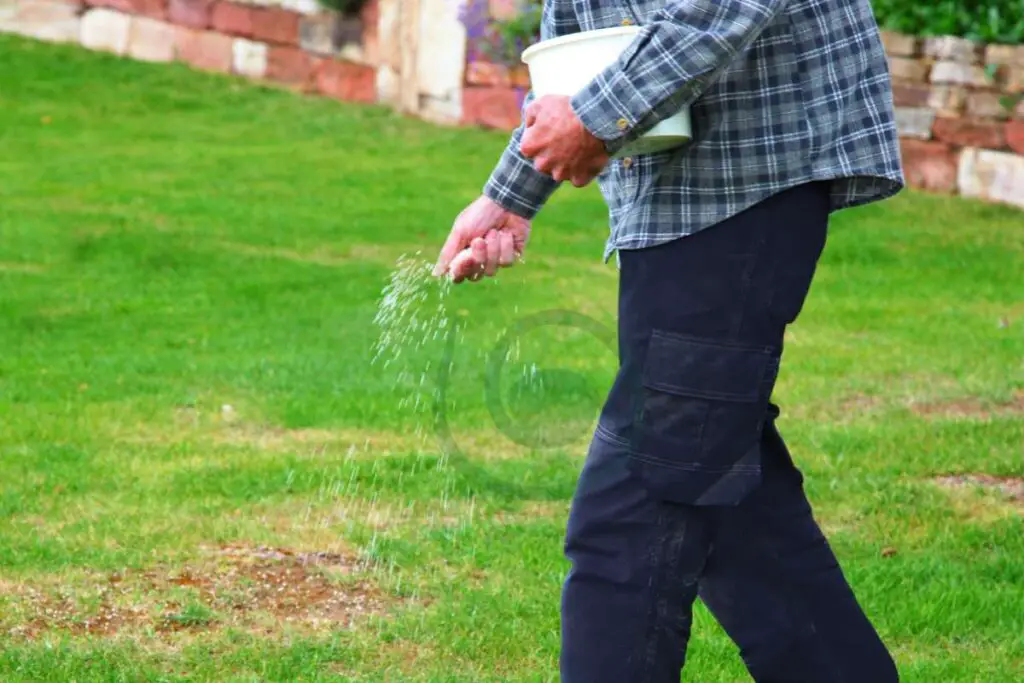
For Michigan lawns, it is important to follow a seasonal fertilization schedule to meet the specific requirements of the soil and climate. In spring, apply a fertilizer with high nitrogen content to support rapid green-up after winter dormancy. During summer, opt for a balanced fertilizer to sustain growth through hot weather. In fall, use a fertilizer rich in potassium to strengthen roots before winter.
Mowing Practices
To promote healthy turf growth post-seeding, it is essential to adopt best mowing practices that prevent stress on newly established grass. Maintaining an ideal mowing height helps develop a dense and lush lawn while reducing weed invasion. For Michigan lawns, aim for a mowing height of 2.5-3 inches to encourage deep root growth and shade out weeds.
Mow your lawn regularly but avoid removing more than one-third of the grass blade length at once to prevent shock and stress on the turfgrass plants. Implementing proper mower maintenance is key for optimal performance post-seeding. Keep blades sharp to ensure clean cuts that promote healthy grass growth and reduce the risk of disease.
Troubleshooting Common Issues
Weed Control
Weed control is crucial for maintaining a healthy lawn in Michigan. Implement regular mowing to prevent weed growth and promote grass density. Consider using herbicides for persistent weeds, following guidelines for safe application.
To minimize weed infestation, ensure proper soil pH levels and adequate watering. Regularly inspect your lawn for early signs of weed growth to take immediate action. Implement mulching techniques to suppress weed germination naturally.
For safe and eco-friendly weed control, opt for organic herbicides or homemade remedies like vinegar solutions. Utilize manual removal methods such as hand-pulling weeds to avoid chemical exposure. Integrate natural barriers like mulch or ground covers to inhibit weed growth.
Patchy Growth
Patchy growth in lawns can result from various factors, including inadequate sunlight, poor soil quality, or improper watering practices. To address patchy areas effectively, consider overseeding with suitable grass varieties that thrive in Michigan's climate conditions.
Incorporate proper fertilization schedules tailored to your lawn's specific needs to encourage uniform growth patterns and fill in patchy spots gradually over time. Adjust mowing heights based on grass types present in different areas of your lawn to promote even growth distribution.
Prevent future patchiness by practicing consistent watering routines, ensuring each area receives sufficient moisture without overwatering. Implement core aeration annually to enhance soil structure and alleviate compaction issues that contribute to uneven grass growth patterns.
Seasonal Lawn Maintenance
Spring Care
Spring is a crucial time for lawns in Michigan, requiring specific care to ensure lush growth. Start by aerating the lawn to allow nutrients and water to penetrate deeply. Next, consider overseeding bare patches in your lawn area for a denser turf.
Fertilization is key during spring; choose a high-quality product suitable for the season turf grasses in Michigan. Post-winter recovery involves removing debris and thatch buildup while promoting new growth. Proper preparation now sets the stage for a vibrant summer front yard.
Fall Preparation
As temperatures drop, it's essential to prepare your lawn for the harsh Michigan winter ahead. Begin by focusing on leaf removal to prevent suffocation of the grass beneath. Follow this with fertilization using a slow-release formula tailored to fall conditions.
Pest control plays a vital role during fall; keep an eye out for common invaders like grubs and treat promptly if detected. To protect your lawn from cold weather damage, consider overseeding once more before winter sets in.
Closing Thoughts
Now that you have a comprehensive understanding of Michigan's climate, the best time to seed grass, soil preparation, seed selection, soil improvement techniques, the seeding process, post-seeding lawn care, troubleshooting common issues, and seasonal maintenance, you are equipped to transform your lawn. By following these guidelines, you can ensure a healthy and vibrant lawn that thrives in Michigan's unique conditions. Remember to stay proactive in caring for your lawn and address any issues promptly to maintain its beauty year-round.
Take charge of your lawn's health and appearance by implementing the knowledge gained from this guide. Your efforts will not only result in a lush and green lawn but also contribute to the overall aesthetics of your property. Start now and enjoy a beautiful lawn that enhances your outdoor space.
Frequently Asked Questions
When is the best time to seed grass in Michigan?
The optimal time to seed grass in Michigan is during late summer to early fall, typically between mid-August and mid-September. This period allows the seeds to establish before winter while avoiding extreme heat.
How can I improve my soil for seeding grass in Michigan?
To enhance your soil for grass seeding in Michigan, consider aerating, testing pH levels, adding organic matter like compost, and ensuring proper drainage. These steps promote healthy root development and overall lawn growth.
What type of grass seed is suitable for Michigan's climate?
Grass varieties like Kentucky bluegrass, fine fescue, or perennial ryegrass are well-suited for Michigan's climate. Choose a blend that matches your lawn conditions and maintenance preferences for the best results in growing lush green turf.
How do I troubleshoot common issues after seeding grass in Michigan?
Common post-seeding issues like poor germination, weed invasion, or uneven growth can be addressed by adjusting watering frequency, applying fertilizers as needed, overseeding thin areas, and promptly addressing any pest infestations.
What are some essential seasonal lawn maintenance tips for maintaining a healthy lawn in Michigan?
Key seasonal lawn care practices include regular mowing at the appropriate height (3-4 inches), fertilizing based on soil test results, aerating compacted soils annually, overseeding bare patches as needed, controlling weeds proactively with herbicides if necessary.
Image Source: Paid image from CANVA

